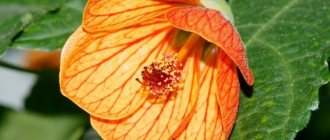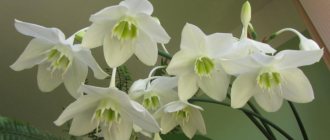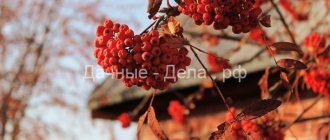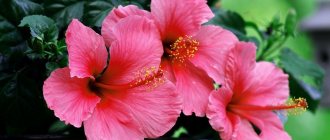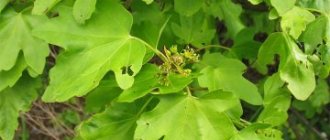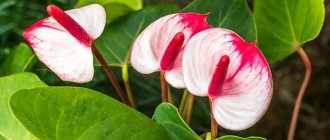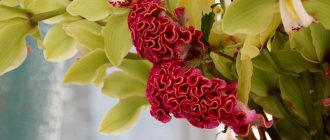In the garden, at the dacha, next to a private house, the delicate balsam or Vanka Mokry flower looks great. On the “pyramid” or “ball” of leaves there are simple and double buds of rich colors. The tropical plant has taken root well in mid- and warm regions.
Many gardeners are interested in what types and varieties are suitable for decorating a summer cottage, how to choose garden balsam? Planting and care, optimal growing conditions, how to prepare seeds and seedlings, suitable humidity, temperature, frequency of watering - useful information for everyone who loves flowers.
Garden balsam: description of the plant
This plant is also found in the wild.
There are also many varieties bred by breeders. Therefore, you can find low-growing bushes, barely reaching 20 cm, and plants 70 cm high (and sometimes from 1.5 to 2 m). The second difference between the varieties is color. Nature has practically used the entire spectrum of shades, which allows you to decorate the area with a bright patterned “carpet”. The same variety of colors is observed in the foliage - from bronze-purple tones to green.
On a note! People call balsam “Vanka wet”, “Ogonyok”, “Touchy”.
The inflorescences have a pyramidal or spherical shape. Otherwise, the cultural characteristics of the species are the same:
- it is a long-flowering bush;
- its branched stems are smooth, succulent, but brittle at the nodes;
- balsam is characterized by foliage;
- the length of the lanceolate (sometimes oval) plates ranges from 8-12 cm;
- fleshy leaves with jagged edges are arranged alternately on the stem;
- Large, irregularly shaped inflorescences “sit” in the leaf axils.
Budding occurs at the end of spring, and the fragrance of the flowerbed lasts until mid-autumn. Then oblong five-chambered achenes are formed on the bush. When the time comes to release the seeds, they scatter throughout the area within a radius of 2 meters. But a mature capsule can react with a similar action to the slightest touch to it. Therefore, the flower received another name - “Touch-me-not”.
Classification
Garden balsam is divided into 3 main groups:
- traditional plants with spreading branches; They are characterized by green foliage and red, pink, white shades of flowers;
- medium-sized compact hybrids with purple, orange, pink, red, white inflorescences;
- New Guinea hybrids with variegated leaves.
Among each species you can find one- and two-color plants, as well as double ones, which, in turn, are divided into pink-like, camellia-like and carnation-like.
According to the direction of branch growth, balsams are divided into erect, bush, and hanging. Among the low-branching plants, bouquet-bush plants (up to 40 cm in height) and dwarf plants (up to 25 cm) stand out.
Popular varieties of balsam
Waller's balsam
Waller's balsam. A medium-sized compact bush with a lush, spherical crown and bare, highly branched stems. The shiny thin leaves have different colors (depending on the hybrid). Large double or single flowers are formed at the tops of the stems and vary in shades from white to purple. There are two-color varieties.
Tumbler Salmon
Tumblr Salmon. Refers to ground cover with a large number of branching shoots. It can develop in hanging flowerpots. Large, varied inflorescences delight the eye with bright colors throughout the year if grown indoors.
Tom Thumb
Tom Thumb. The heavily branching bush reaches a height of 25 cm. Large double inflorescences form on it. The stems are well leafed with delicate plates.
Camellia
Camellia. An excellent variety for mixborders and flower gardens. In comfortable conditions, the erect stem grows up to 1 m. It produces beautiful large double flowers. Grown exclusively by seedlings, as they are afraid of spring frosts
It is worth paying close attention to the New Guinea group of hybrids. These are compact bushes with flowers of various colors. Plants tolerate drought well and adapt well both in sunny meadows and in the shade. They are characterized by continuous flowering.
Balsam New Guinea
At home and in greenhouses, the species is grown as a perennial. Popular varieties include “King Kong”, “Super Elfin”, “Rosette”, “Tango”, “Symphony”, “Fiesta”, “Java”.
Types and varieties of balsam for growing outdoors
Krinum - garden flower, planting and care in open ground
Most varieties of garden balsam were bred in Europe; they are not so numerous. Plants vary in flower color, structure, and shape. There are specimens similar to camellias, roses, and carnations.
Tom Thumb
Compact, dense bushes with a height of 25 to 40 cm. The variety is distinguished by the variety of shades of petals and the duration of flowering. The flowers are double, cover the bushes in large quantities in June and remain, replacing each other until September. And if the air temperature allows, then Tom Thumb blooms until mid-October. Prefers slightly shaded areas, light fertile soils. In such conditions it produces the most magnificent and abundant flowering. It is easy to care for.
Variety Tom Thumb
Balsam Ironbearing
The name “iron-bearing” is explained by the presence of special glands, dense compounds that are located at the base of the leaf plates. The annual shoots are smooth, reaching 50 cm in height. The leaves are bright green, oval, about 15 cm. The flowers are attached to long peduncles. Their color can be pink, bright red, or wine shades.
Important! The disadvantage of this variety is that over time it can turn into a weed.
Hawker's Balsam
The natural habitat of this species is New Guinea, Solomon Islands. It was discovered by botanists in 1884. Wild forms have not taken root as an ornamental crop on the European continent. However, on their basis, large-scale work was carried out to develop hybrid varieties.
A distinctive feature of Hawker's balsam is its large flowers of a beautiful purple hue with a whitish core. The leaves are ellipsoid, green, with beige veins.
Impatiens grandiflora
The birthplace of the species is Sri Lanka. Valued by gardeners, it is becoming increasingly popular due to its large flowers. Their diameter reaches 6 cm. And the color can be different: white, pink, deep red, salmon, purple. Varieties with two-color colors have also been bred. Due to the fact that new buds are constantly forming and blooming, the effect of long-term flowering occurs. It ends only with the onset of frost.
The plant is bushy, densely covered with foliage. Its height and diameter are about 30 cm. The leaf blades are dark green, with a jagged edge. They are practically hidden by a large number of flowers.
Large-flowered balsam
Impatiens creeping
One of the shortest varieties. Miniature plants have an unusual stem color - reddish-brown. The golden hue of the petals looks contrasting against its background. In Russia, this plant still remains very rare.
Impatiens impatiens
A well-known species native to Bengal. In this region, the plant is grown not so much for decorative purposes, but as a seasoning for food. This is a herbaceous annual with a straight stem 25-45 cm high, lanceolate narrow leaf blades with a serrated edge.
The flowers are large, located on short stalks, several in each leaf axil. The diameter of the flowers is about 3 cm, and the color is pink or purple-white. Some varieties have double petals.
Note! The fruits are pubescent, egg-shaped capsules. Flowering period is from July to August. The fruits ripen in September.
Balsam Camellia
The Camellia variety got its name from the similarity of the shape of the flowers to real camellias. Their shades range from purple to snow-white. The bush is covered with many leaves and flowers arranged in pairs. Their size is about 5 cm.
The Camellia variety is very thermophilic and does not survive at low temperatures. Before planting in open ground, seedlings are germinated in good lighting conditions. Without light, plants produce arrows. Flowering occurs at the end of June.
Balsam Carmelita
The stems of the Carmelita variety rise 70 cm above the ground. The plants have a pyramidal shape. The stems are fleshy but fragile and break at the nodes, so they are protected from strong winds. The flowers are double, up to 4 cm in size. Their shape is camellia-shaped, and their color ranges from purple to white. The first buds open in June. Flowering does not stop until September.
The variety is very thermophilic and responds to any temperature changes. Seedlings are planted in open ground in late May - early June.
Variety Carmelita
Balsam Fashionista
The highlight of the variety is its contrasting color. Its two-tone, hot pink and white camellia-shaped double petals do not go unnoticed in the flowerbed. They bloom in the axils of each leaf. The plant itself is erect, 40-50 cm high. It flowers very profusely. In order for the bush to acquire a beautiful shape, it is pinched.
The flower is photophilous and heat-loving, but can grow in slight shade. Loves fertile light soil. Can remain fresh for a long time when cut.
There are other types: Waller's balsam, New Guinea, terry, impatiens small-flowered.
When to plant balsam seedlings
In the conditions of the middle zone, it is recommended to grow balsam as seedlings so that the flowers do not die due to a sharp drop in temperature. The time for sowing seeds is determined based on the region and characteristics of the crop:
- in the central regions this period falls on March-early April;
- for areas to the south, you can start sowing in February-March, but with the obligatory additional illumination of seedlings;
- in the northern regions it is advisable to grow balsam in greenhouses; therefore, it is better to sow seeds in mid-spring;
- for hanging species, the optimal time is at the turn of March-April.
If balsam is grown as a houseplant, then you can do without seedlings by planting seeds in flower pots in any month.
Diseases and their causes
| Impatiens does not bloom | Pot too big. Strength care to build up root mass. |
| Flowers are falling | Dry air, little light, red spider mite infestation. |
| Leaves lose turgor | Not enough watering. |
| The leaves turn yellow, the veins become dark | Chlorosis – not enough iron in the soil. |
A huge selection of balsams will allow you to decorate your home, loggia, balcony or terrace. Its advantages are a huge amount of flower cover, a variety of bright colors and ease of cultivation.
Growing garden balsam from seeds at home
Seedlings will allow you to achieve early flowering of balsam in flower beds. You can sow seeds in various containers - plastic cups, container-type seedling boxes, pots with a diameter of 7 cm. The main thing is that they have drainage holes.
Preparing seeds for sowing
The seed must undergo standard processing:
- soak for 20 minutes in a light manganese solution;
- soak for several hours in warm water, to which a growth stimulator is added;
- then the seeds are washed under running water, laid out on a napkin and dried.
After which the material is ready for laying in the ground.
Selection of soil mixture
Balsam is picky about the substrate. The soil should have a moderately loose structure, weak acidity and contain a nutrient composition. You can buy ready-made soil at a flower shop or make your own mixture using equal amounts of turf soil, sand, peat, and perlite. After thoroughly mixing the components, the substrate is treated with any fungicide against fungal diseases.
Sowing balsam seedlings with seeds
A drainage layer is placed in the container and the container is filled with soil mixture. The soil is moistened and seeds are placed on the surface. If you take small containers, then put 1 seed each. In trays and seedling boxes, they adhere to the scheme - make intervals of 3 cm.
After sprinkling the seeds with a thick layer of soil, moisten it with a spray bottle (so as not to wash out the balsam). Cover the container with glass or film and place it on the windowsill, closer to sunlight. But at the same time, they try to scatter ultraviolet rays using curtains (blinds).
Photos of examples of using a perennial flower
A small selection of photos shows various ways to decorate areas. The use of balsam in landscape design is enormous. Huge compositions are made from flowers, planted in flower beds in groups and individually, and used in garden plots. Various shades will highlight the beauty of garden paths and building facades.
Contrasting duet of balsam with coleus
Tall balsams in the same flower bed with hostas
A spectacular combination of balsam and begonia
Seedling care
In order for balsam seedlings to grow healthy and strong at home, it is important to observe optimal conditions and care rules.
After 1.5-2 weeks, the first shoots appear. From this point on, the shelters are periodically removed, and special attention is paid to growing regimes. First of all, reduce the air temperature by 2-3 degrees and maintain it around 18-20 degrees during the day, and 16-18 degrees at night.
Lighting
For better development, the sprouts are provided with about 12 hours of daylight. In the spring months, this can really be achieved by supplementary lighting using fluorescent lamps.
During the day, balsam seedlings must be protected from direct sunlight. The light should be diffused.
Ventilation
Seedlings must breathe fully. When a real leaf appears on the sprouts, remove the glass (film) from the container in the morning and evening, first for 10 minutes. Every day the duration of ventilation increases and eventually the shelter is completely removed.
Watering
The water should be at room temperature. Watering is carried out as the top layer of soil dries with a syringe or syringe. The stream is not directed under the seedling, but distributed along the edge of the container.
Picking
It is necessary to start picking garden balsam seedlings when the plant has two true leaves. It is best to use individual plastic containers for transplantation, which should have a drainage hole. The soil is used the same as when sowing seeds, or a universal soil is chosen for flowering plants.
On a note! Before picking, balsam seedlings must be watered to make it easier to remove the seedlings from the ground and not injure them.
The picking process is not complicated, the main thing is to stock up on convenient tools. To ensure the transplant takes place with the least stress and does not damage the roots, use a spoon, toothpick or fork.
Fill the cups with soil, add water and make a hole in the center. Carefully pry up the seedlings and transfer them with a lump of earth to a new container. Bury the seedlings down to the cotyledon leaves and add soil on top (if necessary). After 3-4 days, you can water the seedlings with Epin - extra for better rooting.
Feeding
Two weeks later, after the seedlings have completely rooted, you can fertilize with complex fertilizers.
On a note! In order for the bushes to be lush and bloom profusely in the future, it is necessary to pinch the top of the plant.
When to replant in open ground
Before planting balsam in a flowerbed, the seedlings should be hardened off. Pots with plants are taken out to the balcony or outside for several hours during the day. The residence time is gradually increased.
The approximate date for transplanting into open ground is the 20th of May. But here you should pay attention to the weather conditions of the regions. The main thing is that the threat of spring frosts has passed. If the air temperature remains quite cool, then it is recommended to cover the flower beds with covering material.
Adaptation of seedlings will be successful if you follow the recommendations of experienced gardeners:
- balsam loves the sun, but in the heat the tender leaves can get burned; therefore, choose an area with light partial shade;
- but a lack of lighting will cause the bush to stretch excessively and produce small flowers;
- holes for planting are prepared in advance by placing complex fertilizer on the bottom;
- the gap between the bushes is maintained within 20-60 cm (depending on the selected type);
- before removing the seedlings from the container, water the soil mixture;
- the seedlings are removed along with the earthen lump; if the soil has crumbled, then carefully straighten the roots, lightly pinch them and lower them into the hole;
- deepen the plants to the level of the cotyledons, sprinkling the free space with substrate.
The soil around the balsam is crushed, watered and mulched. All other actions come down to regular care of the flower garden.
Site selection and soil preparation
For proper care and planting of garden balsam (a photo of the plant is presented in the article), the growing location and soil play a significant role.
The ideal site for the plant would be a place protected from the winds, with diffused sunlight. Impatiens is a heat-loving plant, so sharp temperature fluctuations are destructive for it, as are scorching sun rays, which negatively affect the growth and development of the flower. Flower beds and flower beds with balsam are best planted along the house, gazebo or near trees.
The soil for the plant must be prepared in advance, so balsam planted in heavy soil with close groundwater develops poorly, its leaves become smaller, and its flowering is poor.
You can avoid this if:
- if moisture stagnates, provide the root system of the flower with drainage from sand, crushed stone, stone or other available materials;
- loosen heavy clay soil with humus, sand, perlite or other appropriate material;
- ensure the appropriate PH level of the soil; if it is overly acidic, flavor it with limestone and dig it up;
- maintain a nutritional balance; if humus was used to loosen the soil, no additional fertilizers are applied.
How to properly care for balsam in summer
This plant can actively develop in the wild, but garden varieties and hybrids should be given attention. Only compliance with agricultural technology will allow you to achieve lush flowering.
Watering
In hot summers, flower beds require a lot of moisture. Not all types of balsam are drought-resistant, so you need to water the flower garden regularly, focusing on the surface layer of soil. But the procedure should not be abused, so as not to provoke waterlogging. It will lead to fungal infection of plants.
Weeding, loosening
To make it easier for the roots to breathe, after watering the soil is loosened to a depth of 1.5 cm. At the same time, weeds are weeded, taking away moisture and nutrients. Those who rarely appear at the dacha can replace this procedure by mulching the soil around the plants.
What to feed for abundant flowering
From the beginning of planting in a flowerbed and right up to autumn, balsam needs regular feeding. They are carried out 2 times a month, using a complex of weakly concentrated fertilizers. Starting from the moment of flowering, nitrogen-containing compounds are completely eliminated and “Impatiens” is transferred to a phosphorus-potassium diet.
Garden balsam, what to feed for growth and abundant flowering - video
Flowering and what to do after flowering
Important details:
- Impatiens produce buds and delight the eye with spectacular colors for several months. There is no specific flowering period; the timing depends on the variety and variety of garden plant.
- At high temperatures, dry soil and air, the buds fall off.
- Fertilizing is not carried out during flowering; potassium fertilizers are applied during the period of bud release.
- If there is not enough space in the pot or a lack of nutrients, the plant blooms poorly.
- Buds and leaves fall off after cold rain or sudden temperature changes, or frosts.
- Poor lighting, low temperatures, short daylight hours are factors that interfere with the flowering of balsam, especially in winter.
Reproduction methods
Balsam is a perennial, but in open ground it is grown as an annual crop. Therefore, propagation by seeds is most common for summer residents. But there is another option. If you dig up the balsam bushes from the flowerbed in the fall and transplant them into flower pots, then by the next season the plant can be divided into parts.
Another option is cuttings. On a developed bush, part of the stems is cut off and rooted in pots. When the shoot takes root and begins to develop, it can be transplanted into a flower garden. But this option does not always give a positive result, so it is recommended to try this cutting method:
- a strong stem is cut from the mother bush at the base;
- divide it into segments 5 cm long so that at least 3 leaves remain on each;
- the leaf blades are removed, and the trimmings are placed in water and stored in a shaded place;
- After a week, roots appear and the cuttings can be planted in a pot.
Further care is identical to that used for growing seedlings.
Flower Vanka wet correct name
They came up with so many names for flowers from the genus Balsamaceae, “Ogonyok”, and “Touch-me-not”, but the most popular and memorable one turned out to be “Vanka wet”. Why "Vanka"? And why “wet”? The fact is that when there is an abundance of moisture, during a thunderstorm or rain, this flower releases its own moisture from its leaves, scientifically called guttation. And he was nicknamed “Vanka” because this flower has long been a favorite of flower growers’ window sills.
In literally every village, in every village, this fragrant plant blooms in a pot or cut-off plastic bottle. From here it received the simple nickname Vanka, which is found in every village. The correct and full name of the plant is Impatiens balsamina or Impatient balsam, which, in principle, corresponds to its biology. As soon as Balsam feels the cold, it stops blooming. With a careless touch, he can even throw off the flowers.
When and how to collect your seeds
The specific features of achenes were mentioned above, therefore, when collecting seeds, you need to adhere to a certain technique:
- after waiting for the balsam fruit to ripen and dry (and this occurs in October), the florist prepares special bags;
- carefully placing the bag on the achene, lightly touch the box; as a result, material is released, but the seeds will not fly further than the bag;
Another method can be used:
- the collection is scheduled for early in the morning;
- carefully grasping the ripe box with your fingers, tear it off the stem;
- the achenes are rubbed with your fingers and this powder is placed on a saucer covered with gauze;
- when the seeds are dry, they are placed in a paper bag, in which they are stored until the next season.
The described method requires skill and accuracy. If you do not have such skills, then it is better to buy ready-made seeds from a distributor. Balsam seeds do not lose their properties for 8 years.
Types of impatiens
There are not many types of balsam:
- Impatiens Wallera, or Impatiens Wallera, is the most common species, from which many hybrids have been developed (Stardust, Frosty, Symphony, Futura, Super Elfin, King Kong, Novette, Confection, Double Duet, Rosette, Fiesta, Candy, Stardust Lavender, Fanciful Tropical ).
- Hawker impatiens.
- Impatiens niamayensis (Nianiana). Its variety, Impatiens corduroy, with slipper-shaped flowers, is especially loved among flower growers.
- Impatiens Peters.
- Ironbearing impatiens.
- Impatiens impatiens, or garden balsam, or Impatiens impatiens.
- Tamarind impatiens. Varieties Rosette, Fiesta, Double Duet, Stardust Lavender are popular due to their double flowers.
- Balfour impatiens.
Problems with seedlings and diseases
If the conditions for growing seedlings described above are violated, the summer resident will end up with diseased seedlings. They will be weak, overly elongated, with pale foliage. Such sprouts and inflorescences turn out small and inconspicuous.
Having noticed signs of improper development of seedlings, the situation can be corrected by adjusting the development regimes. But if poor care leads to illness, you will have to make more efforts:
- cool air and high humidity provoke gray rot; in this case, you will have to destroy all the seedlings;
- if the damage is minor, then only the diseased part of the plant can be cut off; the cut site is sprinkled with crushed charcoal, and the seedlings are treated with fungicides;
- If there are signs of powdery mildew, bacteriosis, or mosaic, balsam is sprayed with Bordeaux mixture.
To avoid the development of diseases, it is recommended to treat seedlings with insecticides for prevention.
Impatiens are also susceptible to attack by pests. Plants can be damaged even indoors. In each specific case, different methods of struggle are chosen:
- the appearance of pinkish spots on the leaves indicates the presence of spider mites; the affected balsam is treated with a soap solution;
- whiteflies will have to be combated with insecticides, treating the bushes once a week;
- Having noticed aphids, the plants and the soil under them are sprinkled with tobacco dust.
To prevent pests from encroaching on open flower beds, balsam should not be planted densely. A preventative measure in the fight against diseases and insects is timely thinning of the flower garden.
Diseases and pests, control methods
Parasitic insects and mites settle on Vanka Mokroy:
| Types of pests | Causes | Fighting methods |
| Aphid | Improper implementation of agrotechnical measures, abundance of garden ants protecting aphids | Treatment of leaves on both sides, stems, flowers with tobacco dust. Planting balsam near the beds where vegetables from the umbrella family grow: natural enemies of aphids often live there: ground beetles, ladybugs |
| Spider mite | Soil drying out, heat, moisture deficiency | Spray the bushes more often in the evenings, lightly shade them to protect them from the scorching sun, and moisten the soil in time. Treat with a solution of laundry soap, spray with acaricides (anti-tick products): Sunmite, Fitoverm, Apollo, Actellik, Anti-tick. Fitoverm is the least toxic product, other drugs are hazard classes 2 and 3, it is important to protect the face, hands, eyesight and respiratory organs |
| Whitefly | The weather is warm, there is a lot of moisture in the air, the plantings are very thick. The bushes are weak, fertilizing is carried out in violation of the deadlines | To catch insects, hang sticky traps and treat them with insecticides every 7 days. |
Another useful table with data on balsam diseases:
| Diseases | Reasons for development | How to treat a plant |
| Gray rot, powdery mildew | Increased air and soil humidity, excessive watering | Remove the infected specimen(s), if the affected area is small, cut off the diseased shoot, treat the cut with charcoal powder. Copper sulfate and fungicides (antifungal drugs) give a good effect: Barrier, Barrier, Fundazol |
| Bacteriosis, mosaic virus | Movement of pathogens from neighboring plants, more often vegetable crops. Viruses infect weak plants if agricultural practices are not followed | The underground and above-ground parts are removed so that the diseases do not spread to neighboring bushes. It is important to find out what rules the grower is violating and adjust the care of tropical specimens |
Balsam in landscape design
The brightness and variety of colors of the inflorescences make it possible to actively use balsam in decorating garden plots. It is thanks to the ability to bloom all season long that the plant can be used to create a real design by planting balsam according to a certain ornamental pattern.
The richness of colors brings its own charm to the design of ridges, rock gardens, rock gardens, and rocky gardens. “Touch-me-not” feels comfortable not only in group compositions - single bushes will look good near gazebos and ponds. They can be planted at the entrance to the house and on the side of the entrance gate.
Hanging varieties will find their place in vertical gardening. It is not necessary to plant bushes in open ground. Balsam beautifully “flows” from hanging flowerpots decorating the terrace, veranda, and porch. They can even be hung on tree branches in the garden, adding a fairy-tale charm to the landscape.
What flowers are combined with balsam in the flowerbed?
It is enough to have different varieties of this plant on hand to decorate the landscape with an original patterned carpet of flowers. Balsam also goes well with other crops. Most often you can see begonia and violet nearby. This combination creates a pleasant atmosphere. The bluebells look interesting against the background of “Vanka Wet”, and the boxwood looks unusual.
What kind of plant is this?
Titles
It is correct to call plants that belong to only one species of the genus Impatiens - Impatiens vulgaris - balsam.
However, plants belonging to all species of the genus Impatiens of the Balsamaceae family are sometimes called balsam. There are about 500 types of such species. Impatiens is an annual and perennial herbaceous plant with a fleshy straight stem . Less commonly it is found in the form of a subshrub. It is sometimes called "impatiens", which means "sensitive" in Latin. People use the names “Vanka wet” and “touchy-touchy”.
Another popular name - “light” - is associated with a beautiful romantic legend about a brave guy who did not return from battle. However, a girl of incredible beauty still waited for him for the rest of her life. After her death, a plant with bright, alluring flowers appeared in the house where she lived.
In Germany they call him “zealous Lisa”, in England - “busy Lisey”. There is also the name “beautiful wreath”, which was given to the flower, compared with the blooming and bright resident of Vienna.
Where is his homeland?
Balsam is native to the tropics and subtropics, namely some regions of Asia and Africa. Now, in addition to these areas, it is widespread in Europe, where it was introduced at the end of the 16th century, and in North America.
Description
Flowers of impatiens growing in the house begin to appear in May and delight with their beauty until December. There are two types of balsam fruit :
- a juicy, multi-seeded capsule that suddenly opens from a light touch (this is why the flower in Russia is called “touch-me-not”);
- berry-like fruit.
The root of this plant is very branched. Impatiens shoots branch, forming a thick green cap up to 50 cm high.
The ovoid or oval leaves of balsam are attached to the stem. Their size is approximately 8-12 cm. Their color is green, but it is sometimes bronze or purple. The leaves are either serrated or entire. Their surface is shiny, as if covered with a greasy coating. At high humidity, grains similar to wet sugar appear on the leaves (this fact explains the popular name “Vanka wet”).
